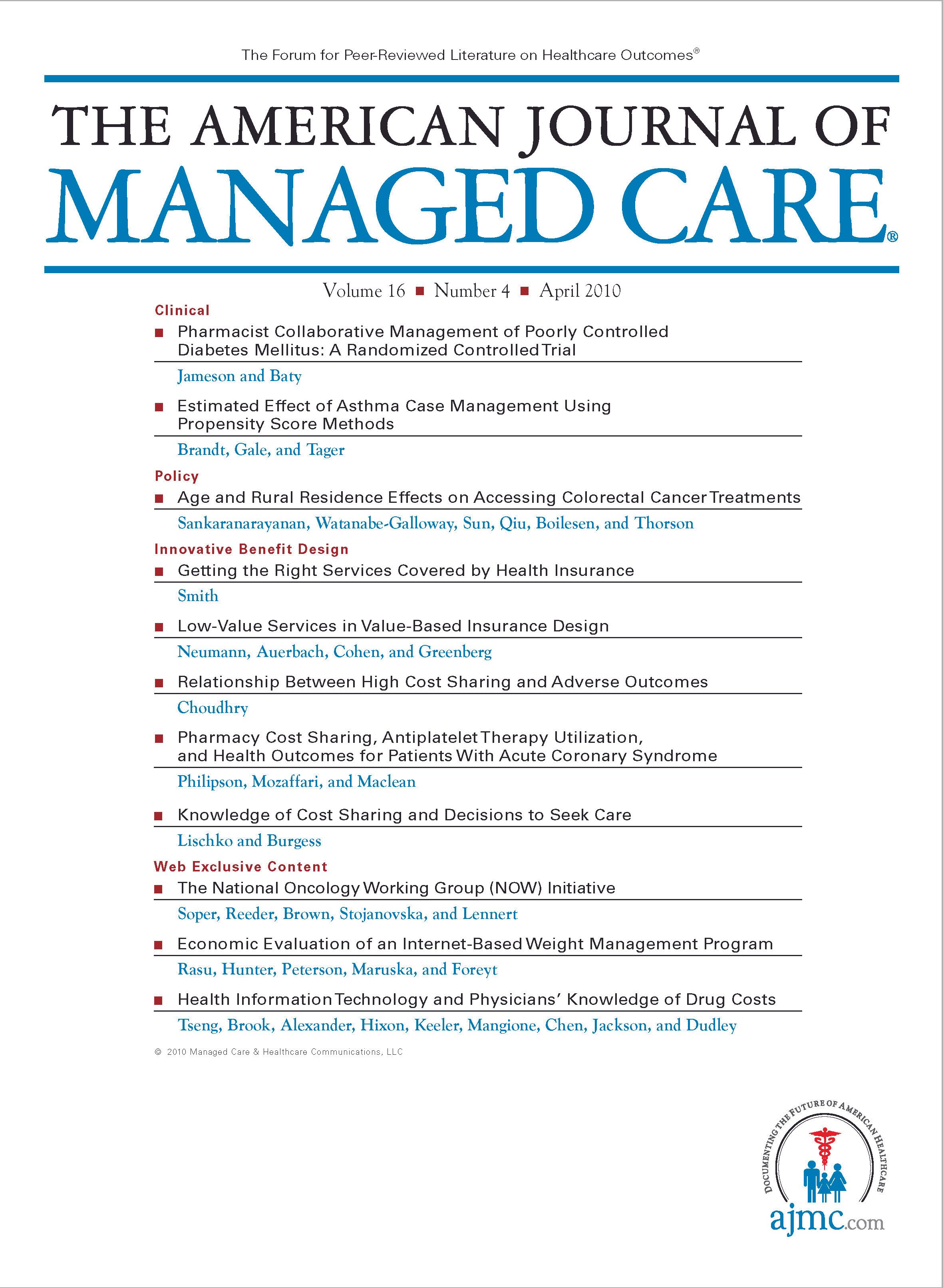- Center on Health Equity & Access
- Clinical
- Health Care Cost
- Health Care Delivery
- Insurance
- Policy
- Technology
- Value-Based Care
Economic Evaluation of an Internet-Based Weight Management Program
An Internet-based weight management program provides a cost-effective alternative for weight management.
Objective:
To determine whether a behavioral Internet treatment (BIT) program for weight management is a viable, cost-effective option compared with usual care (UC) in a diverse sample of overweight (average body mass index = 29 kg/m2), healthy adults (mean age = 34 years) serving in the US Air Force.
Study Design:
Two-group parallel randomized controlled trial.
Methods:
Participants were randomly assigned into 2 groups: UC (n = 215) and UC plus BIT (n = 227). Baseline and 6-month assessments were included in the analyses. Primary outcome measures (changes in body weight, percent body fat, and waist circumference) and secondary outcome measures (Weight Efficacy Lifestyle [WEL] questionnaire) were included in an incremental cost-effectiveness analysis (ICEA) model. Costs were computed using the perspective of an agency wanting to replicate the intervention. Sensitivity analyses were performed to measure the robustness of models.
Results:
Overall cost for BIT intervention was $11,178.40, or $49.24 per BIT participant. Total staff-time cost was $14.03 per BIT participant. Intervention cost was $25.92 per kilogram of weight loss and $28.96 per centimeter of waist-circumference loss. The cost was $37.88 for each additional point gained on the WEL subscale, where increasing scores indicate increased confidence in managing social pressures to eat.
Conclusions:
The BIT program is a cost-effective choice for weight management. It may cost more initially, but it results in long-term cost savings. Such cost-effective, Internet-based behavioral interventions for weight management could provide a valuable tool for preventive care aimed at improving individual and societal health.
(Am J Manag Care. 2010;16(4):e98-e104)
A behavioral Internet treatment (BIT) program for weight management was compared with usual care in a diverse sample of overweight, healthy adults serving in the US Air Force.
- The BIT weight management program was shown to be a cost-effective (only $25.92/kg of weight lost) alternative.
- This program is especially attractive considering its flexibility and improved retention rates and outcomes compared with pharmacotherapy.
Author Affiliations: From the Department of Pharmacy Practice and Administration, School of Pharmacy (RSR, HMM), School of Nursing (RSR), and Bloch School of Business and Public Administration (RSR, HMM), University of Missouri, Kansas City, MO; the National Institute of Diabetes & Digestive & Kidney Diseases (CMH), National Institutes of Health, Bethesda, MD; the Department of Psychiatry (ALP), University of Texas Health Science Center, San Antonio, TX; the Department of Psychology (ALP), Wilford Hall Medical Center, San Antonio, TX; and the Department of Medicine (JPF), Baylor College of Medicine, Houston, TX.
Funding Source: This study was funded (John P. Foreyt, Principal Investigator) by the US Army Medical Research and Materiel Command’s Peer Review Medical Research Program (DAMD17-02-1-0180). The views expressed in this article are those of the authors and are not the official policy of the Department of Defense or the US Air Force.
Author Disclosures: The authors (RSR, CMH, ALP, HMM, JPF) report no relationship or financial interest with any entity that would pose a conflict of interest with the subject matter of this article.
Authorship Information: Concept and design (RSR, CMH, ALP); acquisition of data (RSR, CMH, ALP, HMM); analysis and interpretation of data (RSR, CMH, ALP, HMM); drafting of the manuscript (RSR, CMH, ALP, HMM, JPF); critical revision of the manuscript for important intellectual content (RSR, CMH, ALP, JPF); provision of study materials or patients (RSR, ALP); obtaining funding (ALP, JPF); administrative, technical, or logistic support (ALP, JPF); and supervision (RSR).
Address correspondence to: Rafia S. Rasu, PhD, Department of Pharmacy Practice and Administration, University of Missouri, 2464 Charlotte St, 4247 Health Sciences Bldg, Kansas City, MO 64106. E-mail: rassur@umkc.edu.

From MSSP ACOs to Employer Value: Translating Value-Based Principles to Self-Insured Plans
December 12th 2025Value-based care adoption in employer insurance requires replacing fragmented point solutions with unified, at-risk performance contracts that align vendors, providers, and members around total cost and quality goals.
Read More
Legal Issues in Value-Based Care Contracts for Self-Insured Employers
December 12th 2025Self-insured employers face regulatory challenges when adopting value-based contracts, requiring careful data governance, standardized metrics, and legal frameworks to align with federal value-based care models.
Read More
From Complexity to Clarity: A Path to Value in Employer Health Plans
December 12th 2025Employers struggle to define value from health care spending amid complexity and misaligned incentives. Achieving measurable outcomes requires transparency, incentive realignment, and gradual, employee-centered change.
Read More
Advancing Early Detection and Equitable Access in Alzheimer Disease Care
December 11th 2025Experts at a roundtable in Boston, Massachusetts, on November 3, 2025, discussed improving early Alzheimer disease diagnosis, addressing workforce and equity gaps, and expanding access to new disease-modifying therapies.
Read More

